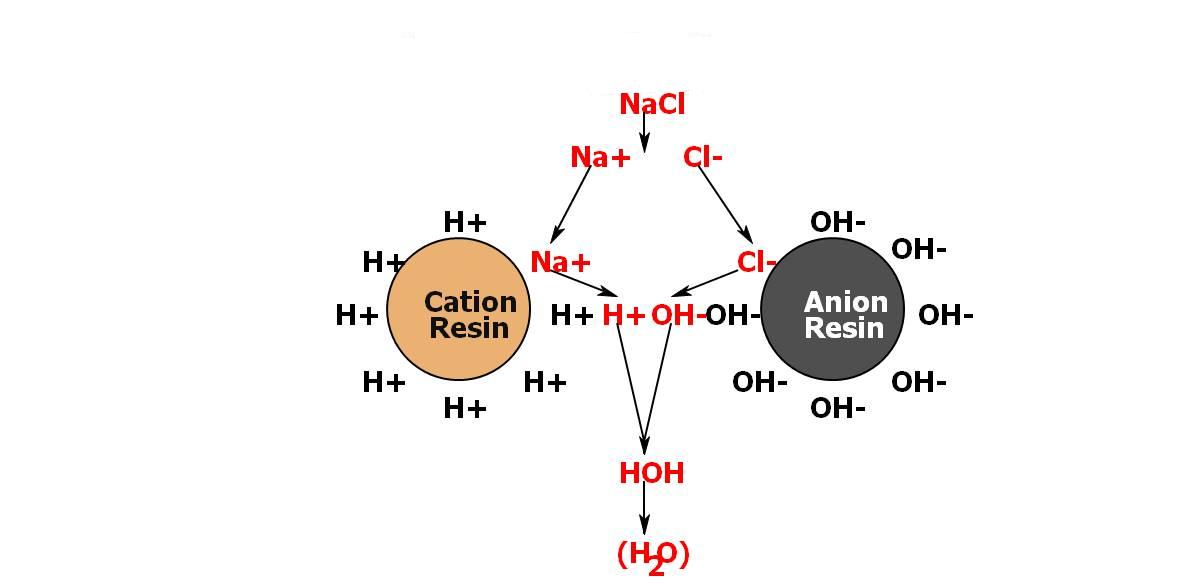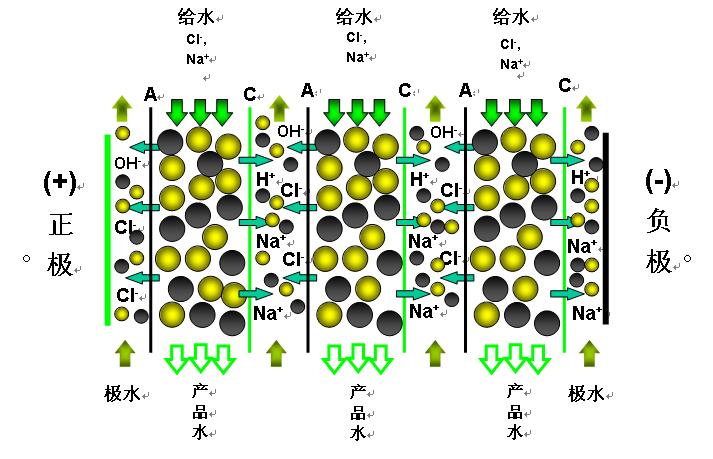The core process of pure water machine and ultrapure water machine (3) ion exchange and electrodeionization technology
l DI (ion exchange) Ion exchange is separated and purified according to the binding force of various ion or ionic compounds and ion exchange fillers. Under certain conditions, an ionic group in the solution can displace the counter ion on the filler and bind to the stationary phase through the charge group, while the equilibrium ion enters the mobile phase, which is the basic of ion exchange chromatography. Displacement reaction. Taking NaCl solution as an example, Na+ replaces H+ , Cl- replaces OH- , H+ and OH- react to form water, and Na+ and Cl- are combined on the resin. The combination of various ions with the charge groups on the ion exchange packing is produced by electrostatic forces and is a reversible process. Therefore, when the ion exchange resin is saturated, regeneration can be achieved in a certain manner. It is worth noting that the polishing resin used to produce ultrapure water will greatly reduce the overall performance after regeneration, so the polishing resin needs to be periodically replaced and not regenerated. l  EDI (electrodeionization) EDI, also known as CEDI ( Continuous Electro-deionization ), is the cutting-edge technology in the field of ion exchange and can be operated continuously without the need for chemical regeneration. EDI is a process in which a mixed ion exchange resin is used to adsorb anion and cations in water, and these adsorbed ions are removed by an cation exchange membrane under the action of a direct current voltage (see Fig. 1 ). This process ion exchange resin does not require regeneration with acids and bases. Figure 1 Schematic diagram of EDI principle Traditional ion exchange ( DI ) has a limited exchange capacity, which results in a decrease in deionization efficiency over a period of time and requires regeneration or replacement. Further, the ion exchange resin itself is also an organic substance, and there are defects such as elution of organic substances and adhesion of microorganisms during use. Compared with DI , the advantages of EDI are mainly reflected in the following aspects: 1) It can run continuously without chemical regeneration, belonging to components rather than consumables; 2) The water quality of the produced water is stable, and the water quality will not decrease due to the saturation of the exchange resin; 3) Although the initial input cost of EDI is high, the operating life of imported brands is generally more than 5 years, and no acid-base regeneration is required, so the operating cost is low; 4) Convenient operation and management, and low labor intensity. Wenzhou Celecare Medical Instruments Co.,Ltd , https://www.celecaremed.com
